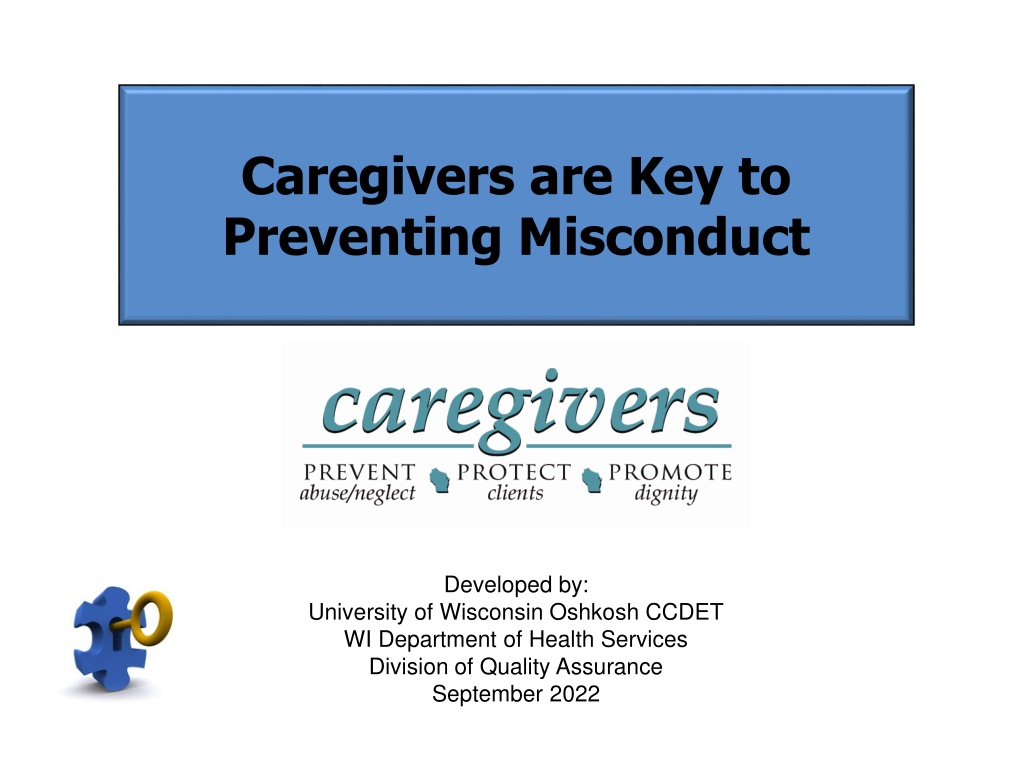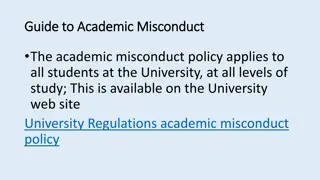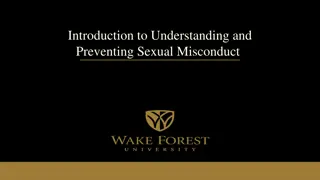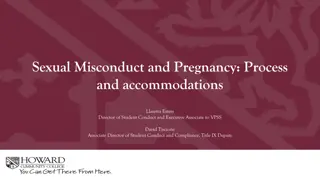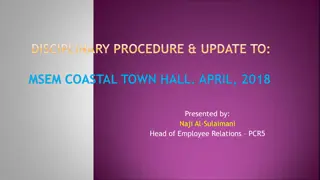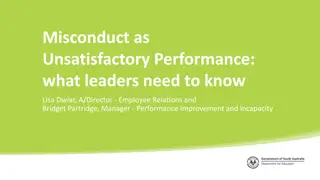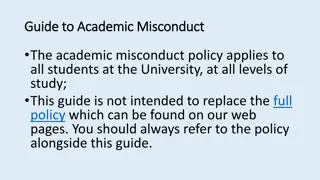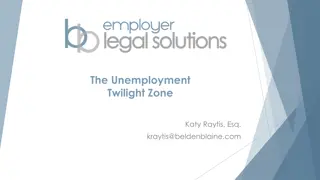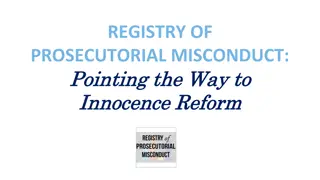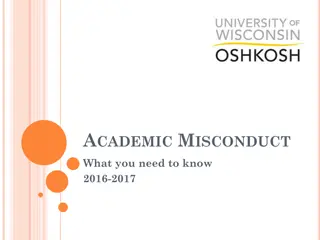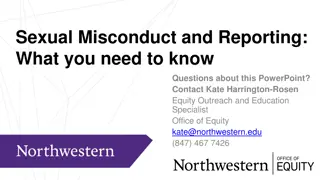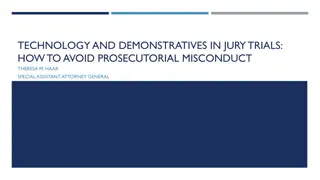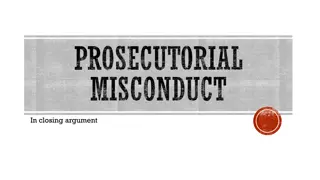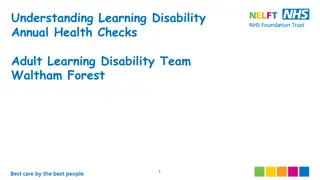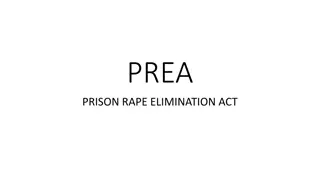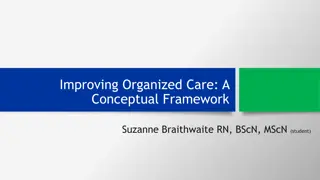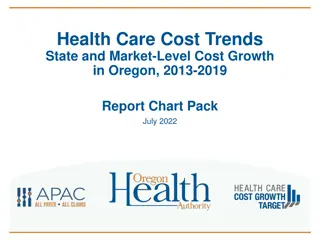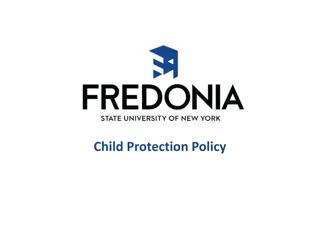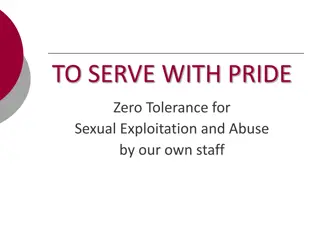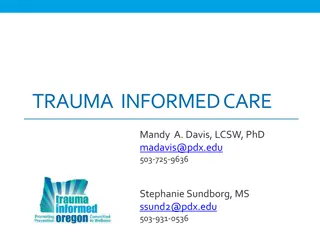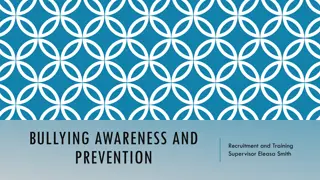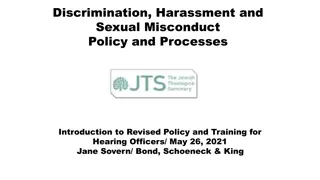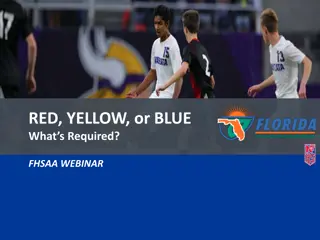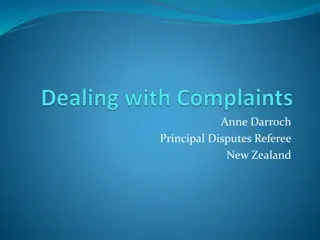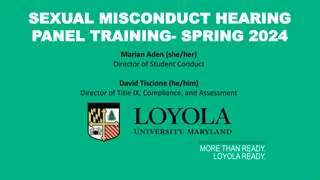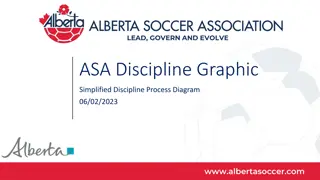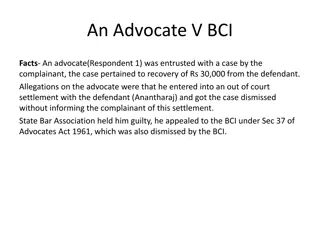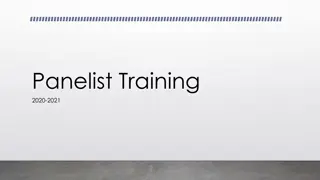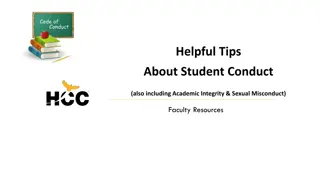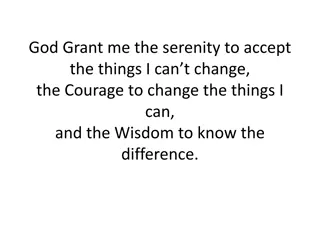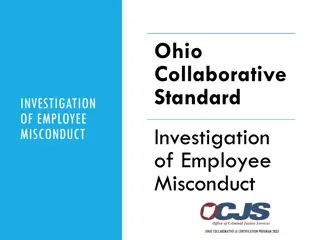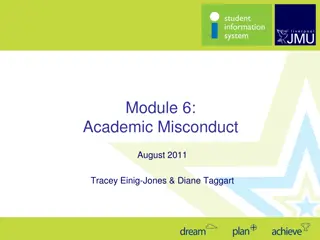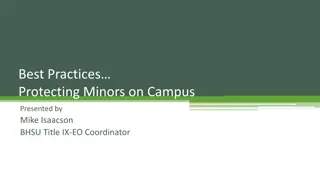Recognizing and Preventing Misconduct in Health Care Settings
Caregivers play a crucial role in preventing misconduct in healthcare settings. Through understanding, empathy, and awareness, staff can recognize signs of abuse, neglect, misappropriation, and injuries of unknown source. This workshop emphasizes the duty to report and protect elderly and vulnerable individuals under their care.
Download Presentation

Please find below an Image/Link to download the presentation.
The content on the website is provided AS IS for your information and personal use only. It may not be sold, licensed, or shared on other websites without obtaining consent from the author. Download presentation by click this link. If you encounter any issues during the download, it is possible that the publisher has removed the file from their server.
E N D
Presentation Transcript
Caregivers are Key to Preventing Misconduct Developed by: University of Wisconsin Oshkosh CCDET WI Department of Health Services Division of Quality Assurance September 2022
Staff in healthcare settings are key to protecting elderly and vulnerable people in their care Direct care staff are the eyes and ears for providers Sometimes, they may see actions by others that just don t feel right Caregivers are Key Overview
Misconduct Learning Points Understand the definitions of misconduct Recognize signs of possible misconduct Review duty to report
Our goal today is to recognize how your knowledge, empathy, and awareness are KEY to preventing misconduct by supporting your colleagues, protecting clients from harm, and recognizing the red flags Introduction to Preventing Misconduct
Definitions of Misconduct For purposes of this workshop, misconduct means: Abuse Neglect Misappropriation And could include Injuries of Unknown Source PG 6
Abuse An intentional act that: Contradicts a health care facility s policy/procedure AND Is not part of the care plan AND Is meant to cause harm.
Neglect A careless or negligent act that: Fails to follow facility procedure or care plan AND Causes or could cause pain, injury, or death BUT Is not intended to cause harm.
Misappropriation An intentional act that: Is meant to permanently deprive a client of property OR Misuses a client s personal property AND Is done without the client s consent.
Injury of Unknown Source The source of the injury was not observed by anyone, or the source of the injury cannot be explained by the resident AND The injury is suspicious because of: the extent of the injury or the location of the injury or the number of injuries at one particular time or the incidence of injuries over time.
1. If it feels safe, try to intervene 2. Use a calm voice 3. Check on the client 4. Report the incident immediately Something Doesn t Feel Right
How to Respond If you were Sara, what would you do if Janet refuses your help and continues to threaten Bill? But what if things didn t go as smoothly? What if Bill continues to refuse his medication or remains upset and angry? What if your provider has no reporting guidelines?
Recognizing the Red Flags Let s take the information we ve covered and apply it to some specific situations In each example, assume you either heard about or witnessed the incident What would you do?
Knowing Your Responsibilities Ensure the safety of the client Report to your supervisor or other designated individual Who When What Where Effect Follow your facility s reporting procedures 13
for the hard work and dedication that you exemplify as a caregiver! You are KEY to preventing misconduct and protecting those in your care. Thank you
Review Misconduct Learning Points Understand the definitions of misconduct Recognize signs of possible misconduct Review duty to report
Bringing awareness about the potential for misconduct & violation of resident rights through the use of personal cell phones & social media Social Media & Misconduct
Social Media Learning Points Understand using a cell phone in the workplace can lead to violations of resident rights & potential misconduct Identify ways to help prevent misconduct related to the use of cell phones Learn ways to properly use cell phones in the workplace
Impact of Social Media
Cell Phone Use & Misconduct Residents have the right not to be recorded, filmed, or photographed without written consent Providers are required to post resident rights in a prominent location in the facility Knowing these rights can help prevent misconduct from happening
Using Handheld Devices Video
Provider Policy Good rules to remember: Personal devices are never to be used to record images of clients Authorized photographs or images are property of the provider and distribution is prohibited Define areas & circumstances when cell phones may be used Specify consequences for failure to follow the policy Inform clients & family/visitors about privacy considerations and use of cameras & cell phones Ensure all employees/contractors, students, & volunteers are trained on cell phone policy
Potential Misconduct 1. Could the use of the cell phone be considered potential misconduct? 2. Is this something that should be reported to the supervisor? 3. Using the policy guidelines, is the use of the cell phone against the provider policy?
Properly Using Your Phone at Work Learn and follow your provider s policies Understand that using a cell phone can lead to violations of resident rights and potential misconduct Turn off or lock up your personal cell phone while in the workplace Do not take photos or videos of clients Assume anything you put on social media can be seen by anyone Remember that once you hit send , you cannot take it back!
Review Social Media Learning Points Understand using a cell phone in the workplace can lead to violations of resident rights & potential misconduct Identify ways to help prevent misconduct related to the use of cell phones Learn ways to properly use cell phones in the workplace
developed by The Wisconsin Caregiver Project University of Wisconsin Oshkosh Center for Community Development, Engagement and Training (CCDET) www.uwosh.edu/ccdet/caregiver
